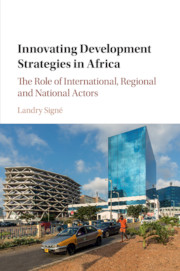Book contents
- Innovating Development Strategies in Africa
- Reviews
- Innovating Development Strategies in Africa
- Copyright page
- Contents
- Figures
- Tables
- Foreword
- Foreword
- Acknowledgments
- Abbreviations
- Introduction
- 1 Innovation in African Economic Development Strategy
- 2 Theoretical and Methodological Framework
- 3 Time, Historical Context, and Innovation in African Development Strategies
- 4 Ideas, Values, Paradigms, and Policy Innovations in Africa
- 5 Interests, Strategies, and Policy Innovation in Africa
- 6 How Do International, Regional, and National Actors Affect Innovation in African Development Strategies?
- Conclusion
- Bibliography
- Index
- References
Bibliography
Published online by Cambridge University Press: 30 August 2017
- Innovating Development Strategies in Africa
- Reviews
- Innovating Development Strategies in Africa
- Copyright page
- Contents
- Figures
- Tables
- Foreword
- Foreword
- Acknowledgments
- Abbreviations
- Introduction
- 1 Innovation in African Economic Development Strategy
- 2 Theoretical and Methodological Framework
- 3 Time, Historical Context, and Innovation in African Development Strategies
- 4 Ideas, Values, Paradigms, and Policy Innovations in Africa
- 5 Interests, Strategies, and Policy Innovation in Africa
- 6 How Do International, Regional, and National Actors Affect Innovation in African Development Strategies?
- Conclusion
- Bibliography
- Index
- References
- Type
- Chapter
- Information
- Innovating Development Strategies in AfricaThe Role of International, Regional and National Actors, pp. 175 - 200Publisher: Cambridge University PressPrint publication year: 2017

